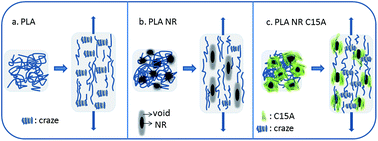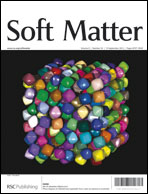Deformation mechanisms in polylactic acid/natural rubber/organoclay bionanocomposites as revealed by synchrotron X-ray scattering
Abstract
The micromechanical deformation mechanisms of a polylactic acid (PLA)/natural rubber (NR) blend (PLA/NR 90/10 wt%) and its organoclay filled bionanocomposites have been investigated by small and wide angle X-ray scattering (


 Please wait while we load your content...
Please wait while we load your content...